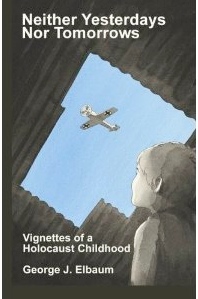by George J Elbaum
Youth Services Center (YSC) is a part of King County Juvenile Court and Detention Center, and since photos were not allowed within the facility, a brief description is in order. First, all visitors (including us) require a pre-visit background check. Tight security at the entrance was evident when we were required to leave our ID at front office and put all personal items in lockers. We then went to the YSC Library which serves students currently incarcerated and attending school. While the library appeared typical for a small school, the students wearing jail garb were escorted in by guards. Students at YSC are typically of high school age and their incarceration can be from a few months to a much longer term, depending on the sentence they received.
My presentation to two separate groups of students was organized by the librarian, Megan Sobchuk, and teacher Elaine Simons, and it was arranged by Julia Thompson of Holocaust Center for Humanity, who accompanied us to YSC. While we expected groups of 6-8 students, we were told that the actual number can vary widely due to specific situations that day. In fact, after arriving at the library, one or more students from each group were taken back for various reasons, leaving 5 students for the first talk and only 2 for the second. In these two groups, all but one student were minorities. While we were warned that there might be disruptions and boisterous behavior from some students, they were actually quite attentive during my talk – Megan even commented how surprised she was that “one could hear a pin drop.”
My presentation was part of a Holocaust study unit designed by Megan and Elaine to give the students an understanding of how history plays a role in social justice and the issues they are facing today. In my talk I emphasized that after coming to America I had several strikes against succeeding: I was an immigrant, didn’t speak English at first, then had a heavy accent, didn’t understand American culture, and stuttered badly. I was also discouraged by school counselors. However, I believed that in America one can succeed with hard work, regardless of one’s background. I worked hard, succeeded, and encouraged the students at YSC to do the same.
From students’ comments after my talk as well as their previously prepared questions, it was obvious that some knew nothing about the Holocaust while some were surprisingly knowledgeable. For example, of the 2 students in the second group, one showed no knowledge or interest in the Holocaust whatsoever while the other quietly mentioned the Jedwabne massacre and left with teary eyes. I was especially moved by the care and warmth shown by Megan toward the students, probably fueled by her own family member’s history. We learned during our visit that the plight of many of these students is at least partly a result of the crack epidemic that swept through their parents’ generation. My hope is that at least one of the students might take my story to heart and succeed against the strikes currently against him.

